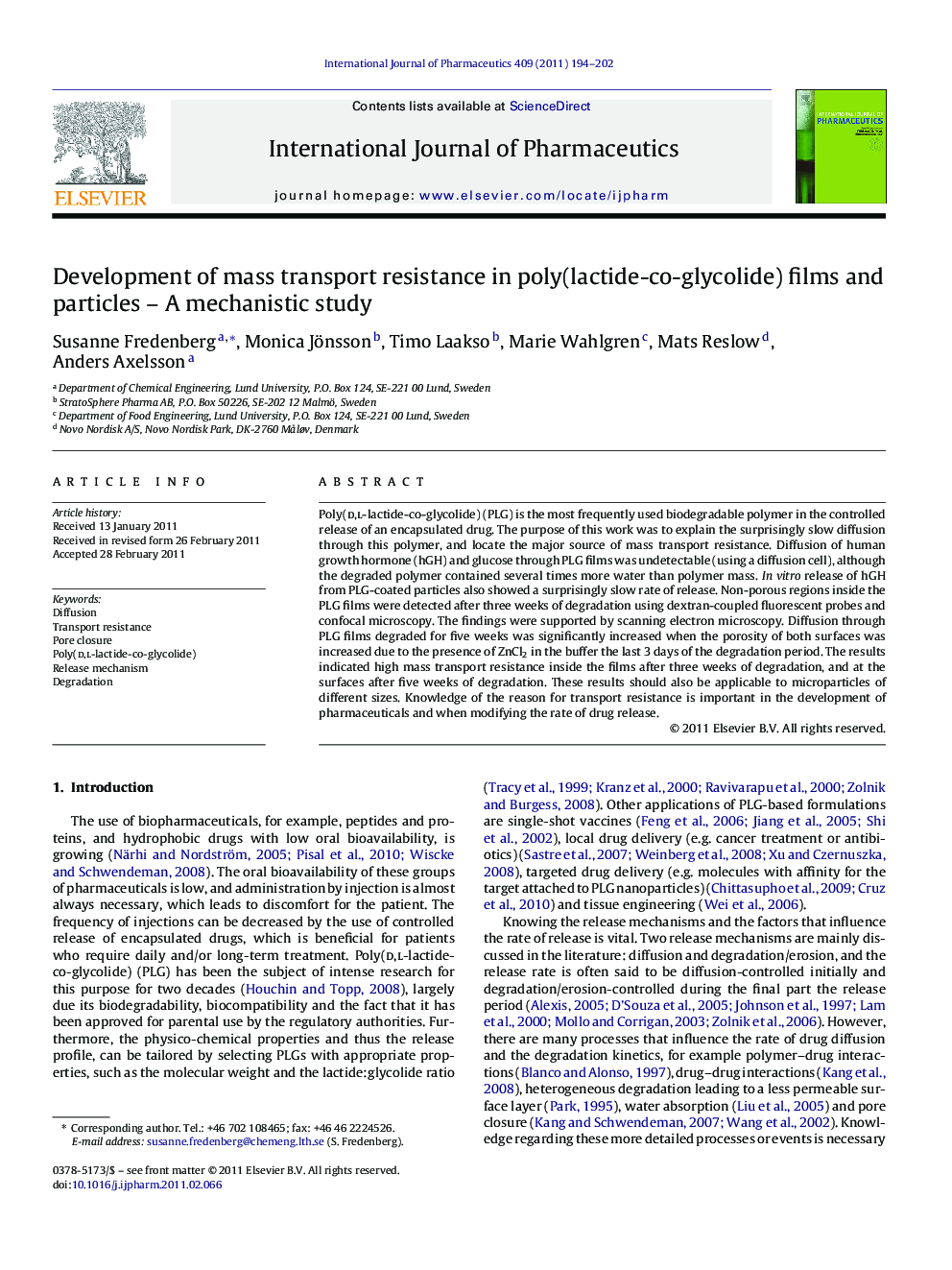| کد مقاله | کد نشریه | سال انتشار | مقاله انگلیسی | نسخه تمام متن |
|---|---|---|---|---|
| 2503610 | 1557433 | 2011 | 9 صفحه PDF | دانلود رایگان |

Poly(d,l-lactide-co-glycolide) (PLG) is the most frequently used biodegradable polymer in the controlled release of an encapsulated drug. The purpose of this work was to explain the surprisingly slow diffusion through this polymer, and locate the major source of mass transport resistance. Diffusion of human growth hormone (hGH) and glucose through PLG films was undetectable (using a diffusion cell), although the degraded polymer contained several times more water than polymer mass. In vitro release of hGH from PLG-coated particles also showed a surprisingly slow rate of release. Non-porous regions inside the PLG films were detected after three weeks of degradation using dextran-coupled fluorescent probes and confocal microscopy. The findings were supported by scanning electron microscopy. Diffusion through PLG films degraded for five weeks was significantly increased when the porosity of both surfaces was increased due to the presence of ZnCl2 in the buffer the last 3 days of the degradation period. The results indicated high mass transport resistance inside the films after three weeks of degradation, and at the surfaces after five weeks of degradation. These results should also be applicable to microparticles of different sizes. Knowledge of the reason for transport resistance is important in the development of pharmaceuticals and when modifying the rate of drug release.
.Figure optionsDownload as PowerPoint slide
Journal: International Journal of Pharmaceutics - Volume 409, Issues 1–2, 16 May 2011, Pages 194–202